Museum-Hopping in Manila: Three Must-See National Museums that highlight art, history, and culture—an inspiring day trip you won’t forget!
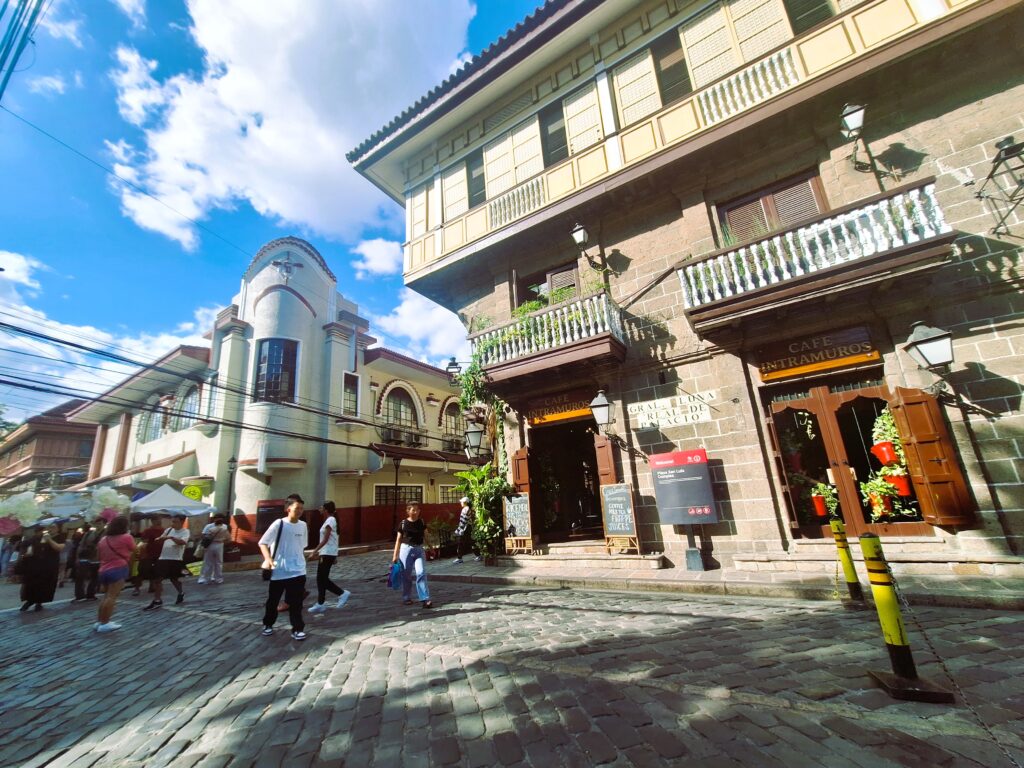
If you’re looking for a fun, educational, and totally affordable adventure, museum-hopping in Manila is the way to go! I finally got to tick this off my list—and I’m thrilled to share our journey through three must-see national museums in Intramuros.
After months of staying in, my friend and I were both itching for something different. Luckily, we’re both museum lovers, and spending a day surrounded by art, history, and culture was just what we needed.
The best part? All three museums were just a short walk from each other. No stress. No long travel times. Just an easy, history-filled day in the heart of Manila.
Getting There – Museum-Hopping in Manila: Three Must-See National Museums
We booked a Grab to kick off our museum day. Pro tip: If you’re starting at the National Museum of Natural History, tell your driver it’s right across Manila Doctors Hospital.
Sometimes, the map apps don’t pin the exact entrance. Mentioning the hospital makes it easier for your driver to find the right spot.
Once dropped off, cross the street from the hospital entrance. In less than a minute, you’ll be standing at the museum doors—your time-travel adventure begins!
Before You Go: Museum Visitor Guidelines
If you’re visiting as an individual or in a small group, you can just walk in. But if you’re planning to come with 20 or more people, here’s what to do:
✅ Visit the National Museum of the Philippines website
✅ Click the “Book a Tour” section
✅ Fill in your group’s details
This helps them manage large groups and ensures you get the most out of your visit.
Museum-Hopping in Manila: Operating Hours and Important Info
Here’s what you need to know before your trip:
🕘 Opening Hours: Tuesday to Sunday, 9:00 AM – 6:00 PM (Closed on religious holidays)
🎟 Admission: Free for all visitors
🚶♀️ Walk-ins: Welcome for individuals or small groups
📅 Group Bookings: Reserve at least five days in advance for groups of 20+
📵 Same-day bookings are not accepted
Contact Info:
📞 Landline: (02) 8298-1100 local 3000
📱 Mobile: 0947-997-3520
📧 Email: reservation@nationalmuseum.gov.ph
🔐 Don’t forget your valid ID—it’s required upon entry.
🎒 For safety and convenience, leave restricted items at the museum’s baggage counter.
Breakfast Stop Before Museum-Hopping in Manila
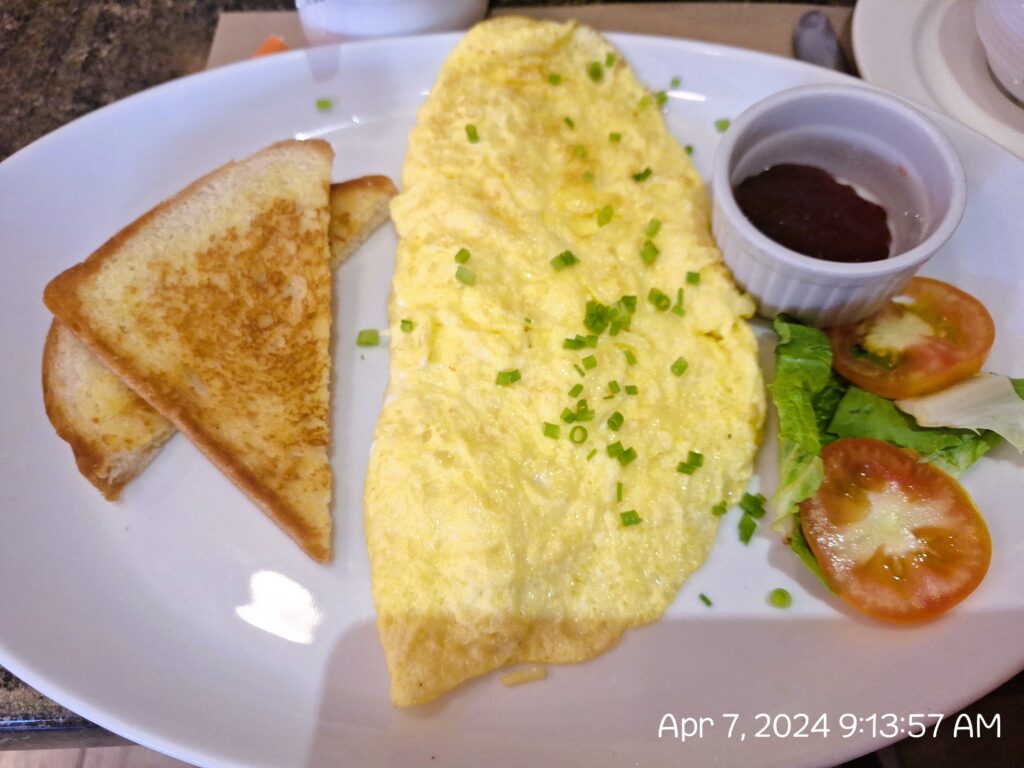
Before diving into a day of museum-hopping in Manila, we made a smart (and delicious) stop. Since the National Museum of Natural History opens at 9:00 AM, we treated ourselves to a hearty breakfast at Pancake House, conveniently located inside Manila Doctors Hospital—just a short walk from the museum entrance.
The cozy atmosphere and quick service made it the perfect pre-museum stop. We left feeling full, energized, and ready for our cultural adventure.
First Stop: Natural History – Museum-Hopping in Manila

As the first leg of our museum-hopping in Manila, the National Museum of Natural History didn’t disappoint. This beautifully designed space offers a fascinating look at the Philippines’ rich natural wonders, from land to sea.
Here’s what stood out during our visit:
- 12 Permanent Galleries – Explore captivating displays of native plants, rare animals, rocks, minerals, and fossils—all showcasing the country’s natural history.
- Tree of Life – At the heart of the museum stands this architectural marvel, symbolizing the connection among the Philippines’ ecosystems—from high mountains to coral-rich seas.
- Lolong Replica – You can’t miss the life-sized replica of Lolong, the world’s largest crocodile ever held in captivity—both awe-inspiring and a little scary!
- Taxidermy Philippine Eagles – Get up close with the stunning, preserved forms of our national bird—an endangered species and a powerful symbol of Philippine biodiversity.
The museum is part of the National Museum Complex, which also includes the National Museum of Fine Arts and the National Museum of Anthropology—both just a short walk away.
Top Floor to Ground: Touring the National Museum
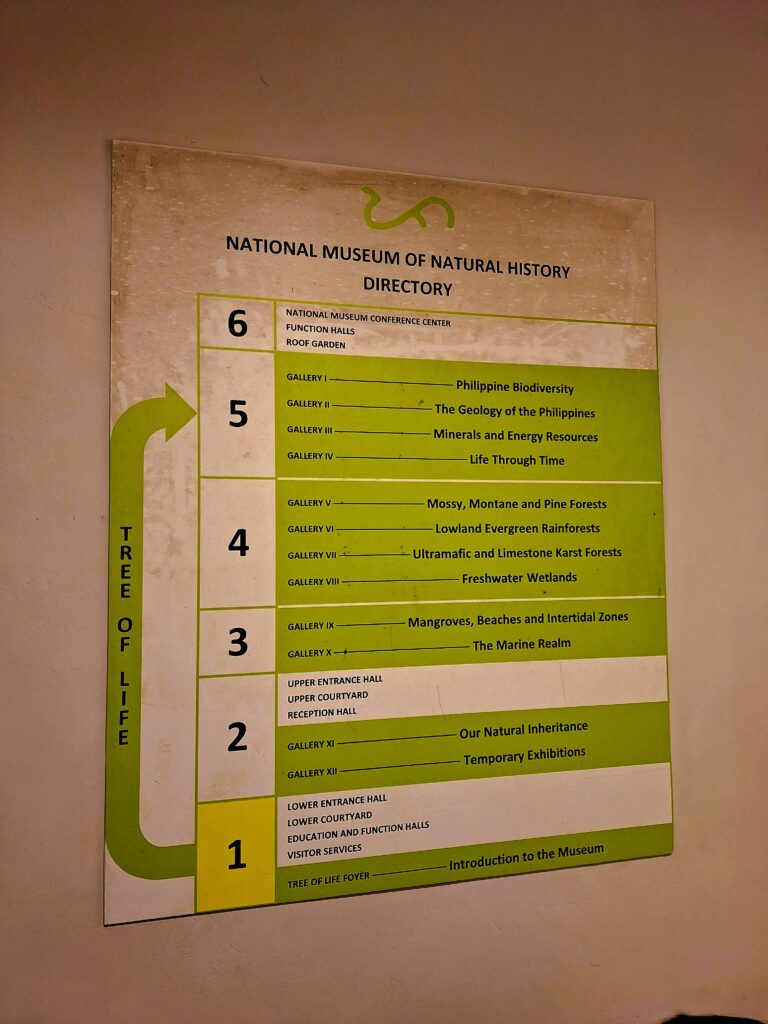
One of the best tips we received during our museum-hopping in Manila adventure came from the staff at the National Museum of Natural History: start your tour on the fifth floor and work your way down.
Why? Because the exhibits are arranged top-to-bottom, guiding you through a well-thought-out narrative that flows beautifully from biodiversity to deep-sea wonders. With 12 permanent galleries, this layout helps you appreciate each theme in the right sequence—making your visit more immersive and meaningful.
Here’s a quick look at what you can explore inside the museum:
- Philippine Biodiversity (Gallery I) – A creative display of plants, animals, and rocks that highlight the unique natural history of the Philippines.
- The Geology of the Philippines (Gallery II) – Learn about rocks, minerals, and the natural forces that shaped the country.
- Minerals and Energy Resources (Gallery III) – Discover valuable minerals found in the Philippines and how they’re used in daily life.
- Life Through Time (Gallery IV) – See how life evolved on Earth, from ancient fossils to today’s living creatures.
- Carabao Family – Learn about the role of the carabao (water buffalo) in Filipino farming and culture.
- Mossy, Montane, and Pine Forests (Gallery V) – Explore the ecosystems found in the country’s higher and cooler areas.
- Tropical Lowland Evergreen Rainforest (Gallery VI) – Discover the rich plant and animal life in the Philippines’ lowland rainforests.
- Ultramafic and Limestone Karst Forests (Gallery VII) – Learn about rare ecosystems found in special rock formations.
- Freshwater Wetlands (Gallery VIII) – Understand the importance of wetlands and the wildlife they support.
- Mangroves, Beaches, and Intertidal Zones (Gallery IX) – Explore coastal areas and the creatures that live there.
- The Marine Realm (Gallery X) – Dive into ocean life, from coral reefs to deep-sea creatures.
- Our Natural Inheritance (Gallery XI) – Discover why protecting our natural resources is important for the future.
Tree of Life Highlights – Museum-Hopping in Manila

While exploring each floor, we couldn’t resist stopping for photos at the iconic Tree of Life, the museum’s massive, eye-catching structure located right in the center atrium.
This sculpture isn’t just stunning—it’s symbolic. The Tree of Life represents the interconnectedness of Philippine ecosystems, visually tying together the themes of environmental unity and biodiversity.
In many cultures, trees symbolize growth, origin, and connection. Inside the museum, this artwork reflects the same ideas—reminding us how deeply all life forms are linked, from the forest canopies to the coral reefs.
Before ending our tour, we made sure to take a few memorable photos beside it. It’s one of those must-see features that brings the museum experience full circle.
Second Stop: Anthropology – Museum-Hopping in Manila
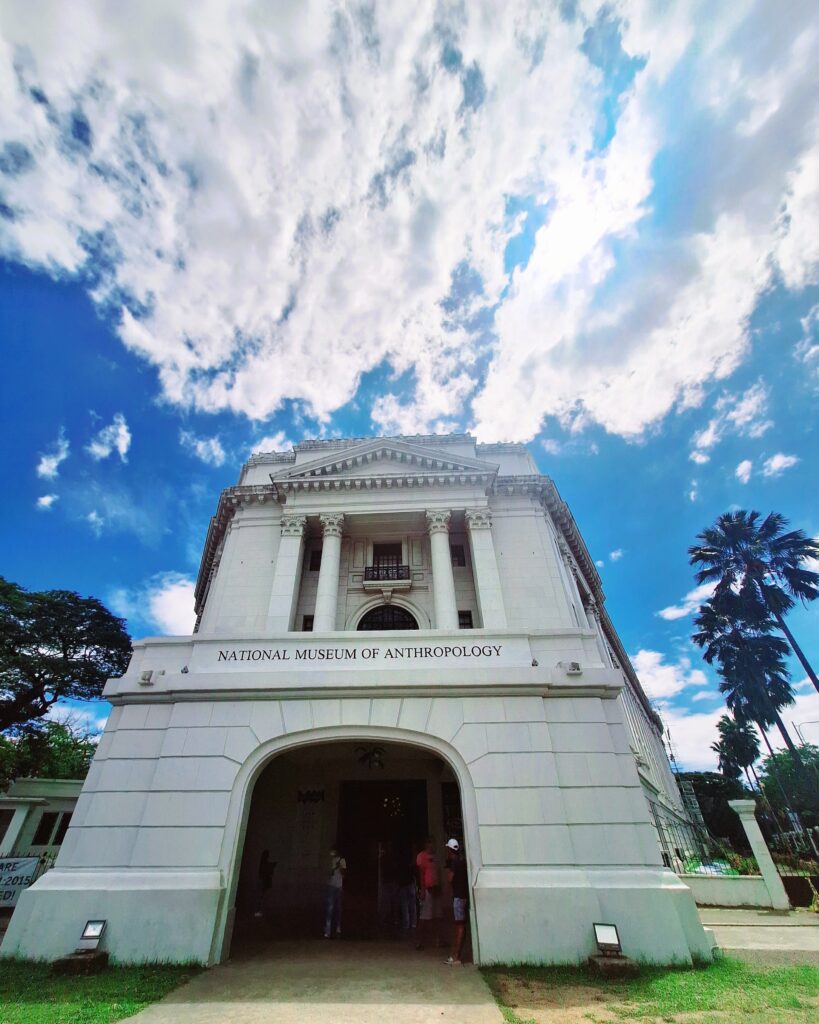
As we continued museum-hopping in Manila, our second stop brought us to the National Museum of Anthropology. This museum offers a deeper dive into the culture, heritage, and history of the Philippines, told through a wide array of artifacts, exhibits, and life-sized reconstructions.
If you love exploring how people lived, dressed, celebrated, and believed, this museum is a must-visit. It felt like walking through centuries of Filipino identity.
What to Expect at the National Museum of Anthropology
The National Museum of Anthropology highlights the rich culture and history of the Philippines through its many exhibits. Here’s what you can explore:
- Archaeological Artifacts – xplore ancient pottery, tools, and weapons that offer a glimpse into early Filipino life.
- Ethnographic Displays – Admire traditional clothing, woven textiles, musical instruments, and tools used by various Philippine ethnic groups.
- Life-Sized Dioramas – Walk through highly detailed dioramas depicting daily life, rituals, and community settings of indigenous peoples.
- Filipino Prehistory – View fossils, skeletal remains, and prehistoric artifacts that trace the journey of the earliest humans in the Philippines.
- Philippine History Exhibits – From the Spanish colonial era to the Philippine Revolution and World War II—each gallery presents a chapter of our national history.
- Anthropological Research Materials – Check out archival photos, field notes, and documents used by researchers to study Filipino cultures and traditions.
- Special Exhibitions – Rotating galleries often feature topics like indigenous rights, cultural preservation, or current social themes.
Cultural Exhibit Spotlight: ANITO in Manila Museums

One of the most powerful and thought-provoking exhibits we saw was “ANITO: Beliefs, Traditions and the Afterlife in Northern Luzon.” This beautifully curated gallery offers a sacred glimpse into how indigenous communities view life, death, and the spirit world.
What made this exhibit stand out?
🌺 Hand-Carved Wooden Coffins
Each coffin was intricately crafted with animal carvings and sacred symbols—believed to guide spirits on their journey to the afterlife.
🌀 Sacred Symbols and Motifs
Patterns etched into the wood held deep meaning for the community, telling stories of the person inside and their place in the spiritual realm.
Seeing these up close felt intimate, even humbling. The artistry wasn’t just decorative—it was spiritual. This exhibit captured the fusion of faith, tradition, and craftsmanship in a way that words can barely express.

In summary, the “ANITO” exhibit beautifully showcased the rich artistry and spiritual traditions of the people of Northern Luzon. It was both informative and visually captivating.
Traditional Weapons Exhibit
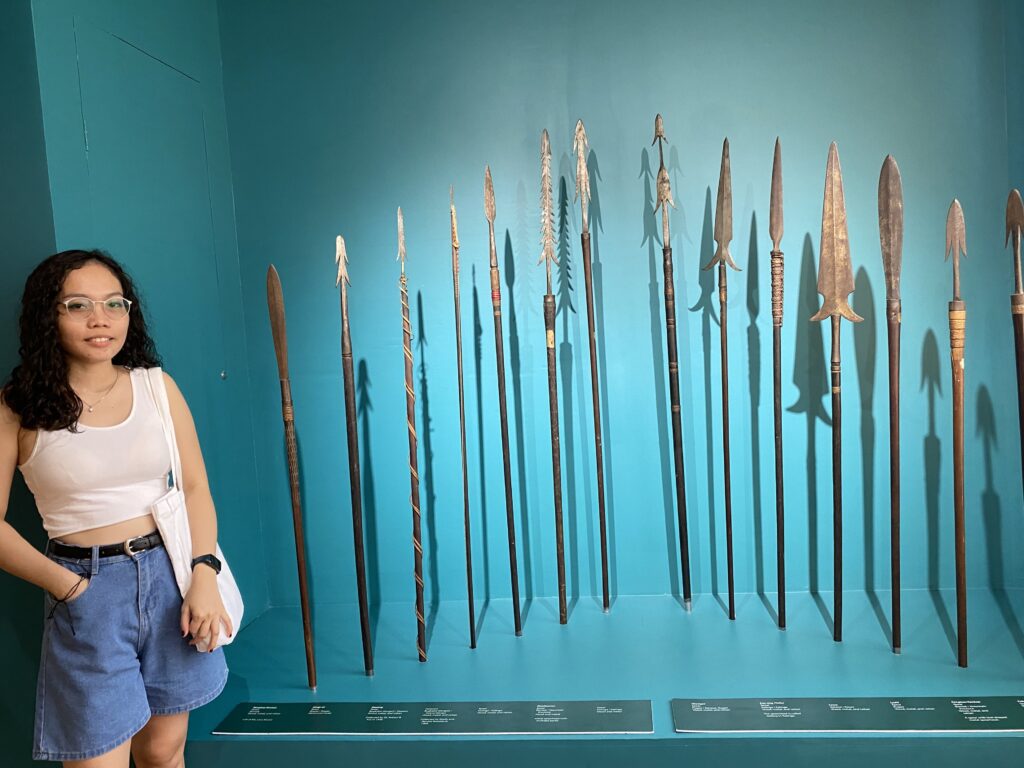
While continuing our museum-hopping in Manila, one section that truly captivated us at the National Museum of Anthropology was the exhibit on traditional Filipino weapons. These artifacts weren’t just tools—they told stories of identity, heritage, and resilience.
Displayed in chronological order, these weapons reflected the skills and traditions of indigenous tribes from different regions of the Philippines.
Time for a Break!
Lunch Break at Barbara’s – Museum-Hopping in Manila

We headed to Barbara’s Heritage Restaurant, one of the most popular dining spots in Intramuros, known for its classic Filipino dishes and an elegant, old-world ambiance. It’s located conveniently near the entrance of Casa Manila, making it the ideal place to relax after a morning of exploring.
But what made our lunch truly special wasn’t just the food—it was the live music!
A talented three-piece band played while we dined, performing songs in English, Japanese, Chinese, and Spanish to entertain the diverse crowd of tourists and locals. It added such a festive and welcoming atmosphere to the meal.
They even played one of my all-time favorite songs—“Qing Fei De Yi” by Harlem Yu—the iconic theme from the TV show Meteor Garden, which I adored in high school. Hearing it live brought back a flood of memories!
Their Japanese set was just as impressive. When they performed “I LOVE YOU” by Yutaka Ozaki, the crowd lit up with recognition and appreciation. It’s a beloved Japanese ballad, and they captured its emotion beautifully.
Next came a soulful rendition of the Spanish classic “Sabor A Mí,” a song that my friend Jezelle absolutely loves—especially the version by Eydie Gormé and Los Panchos. She was over the moon hearing it live!
As a huge K-Drama and K-Pop fan, my personal favorite version of that song is by EXO, specifically their sub-unit EXO-K. They performed it on Music Bank HOT Stage back on November 12, 2014, and that performance has stayed with me ever since. So hearing it again—live and unexpected—was a real treat.
This multicultural music experience turned a simple meal into a highlight of our day. It made lunch at Barbara’s Heritage Restaurant in Intramuros not just a stop to eat, but a joyful and nostalgic moment to remember.
Final Stop: Fine Arts – Museum-Hopping in Manila
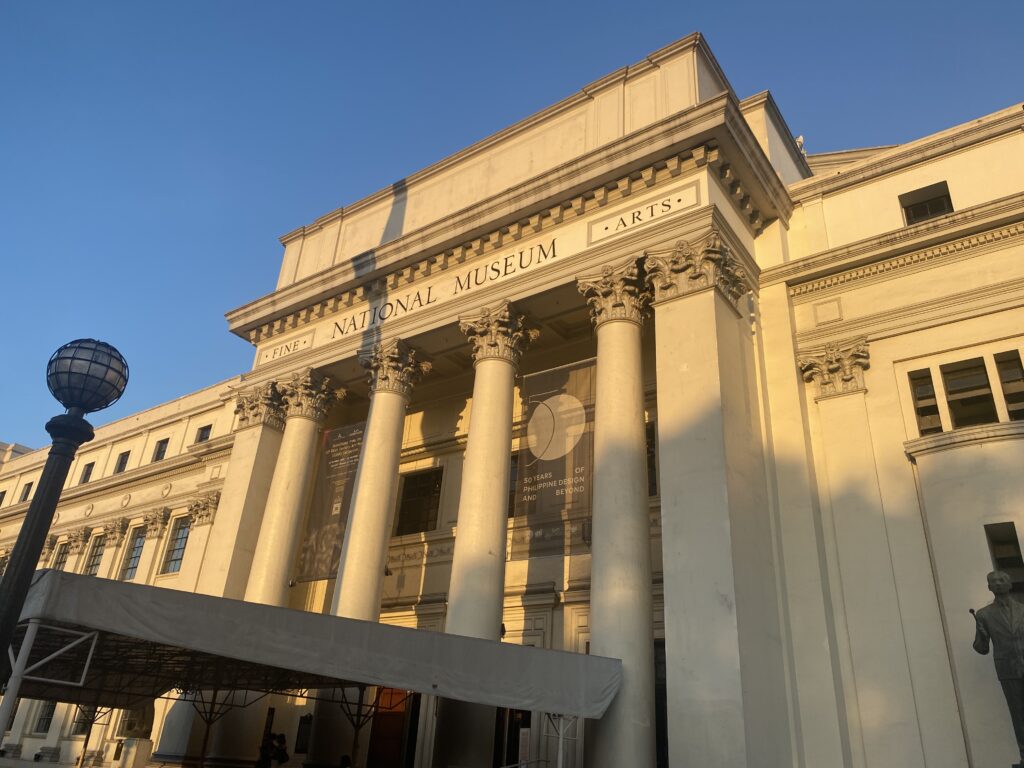
After a delicious lunch, we were recharged and excited for our final destination—the National Museum of Fine Arts. Of course, we were also ready to take more photos! This museum is a must-visit for art lovers. Here’s what you can look forward to:
- 29 Galleries and Hallway Exhibits – The museum features 29 galleries showcasing works by 19th-century Filipino masters, National Artists, as well as modern painters, sculptors, and printmakers.
- Art Loans – Aside from its permanent collection, the museum also displays pieces loaned from other government agencies, private collectors, and organizations.
- Architectural Beauty – The building itself is stunning. Designed by Ralph Harrington Doane, Antonio Mañalac Toledo, and Juan M. Arellano, this neoclassical structure was completed in 1918.
- Famous Artworks – Some highlights include Juan Luna’s “Spoliarium”, Felix Resurrección Hidalgo’s “El Asesinato del Gobernador Bustamante”, and Simon Flores y de la Rosa’s “Recuerdo de Patay” (Memento Mori of a Child).
Spoliarium by Juan Luna

Right at the entrance, we spotted the famous SPOLIARIUM painting. It’s huge and super famous, so we couldn’t miss it! We took some time to admire all the details and took some photos. There were more people crowded around this one compared to the other museums we visited.
The Spoliarium was created by the renowned Filipino painter Juan Luna y Novicio (1857-1899). The title “Spoliarium” refers to the Roman Colosseum basement where fallen gladiators were thrown after combat.
Ang Kiukok
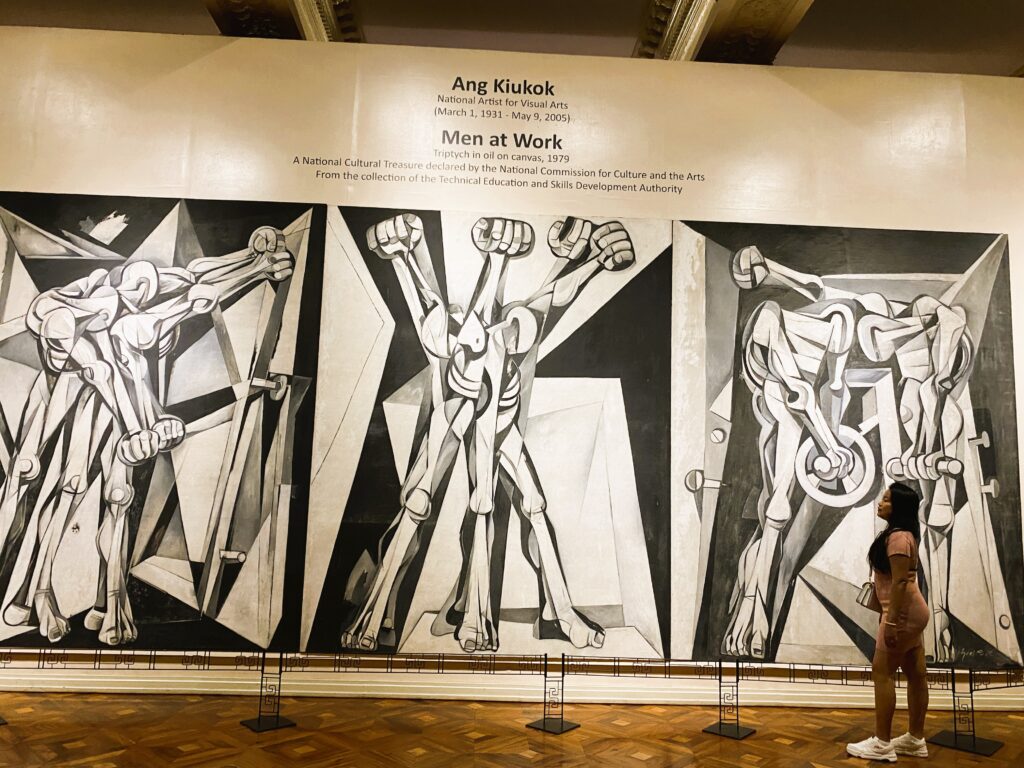
“El Gobernador Y El Obispo” (1896)
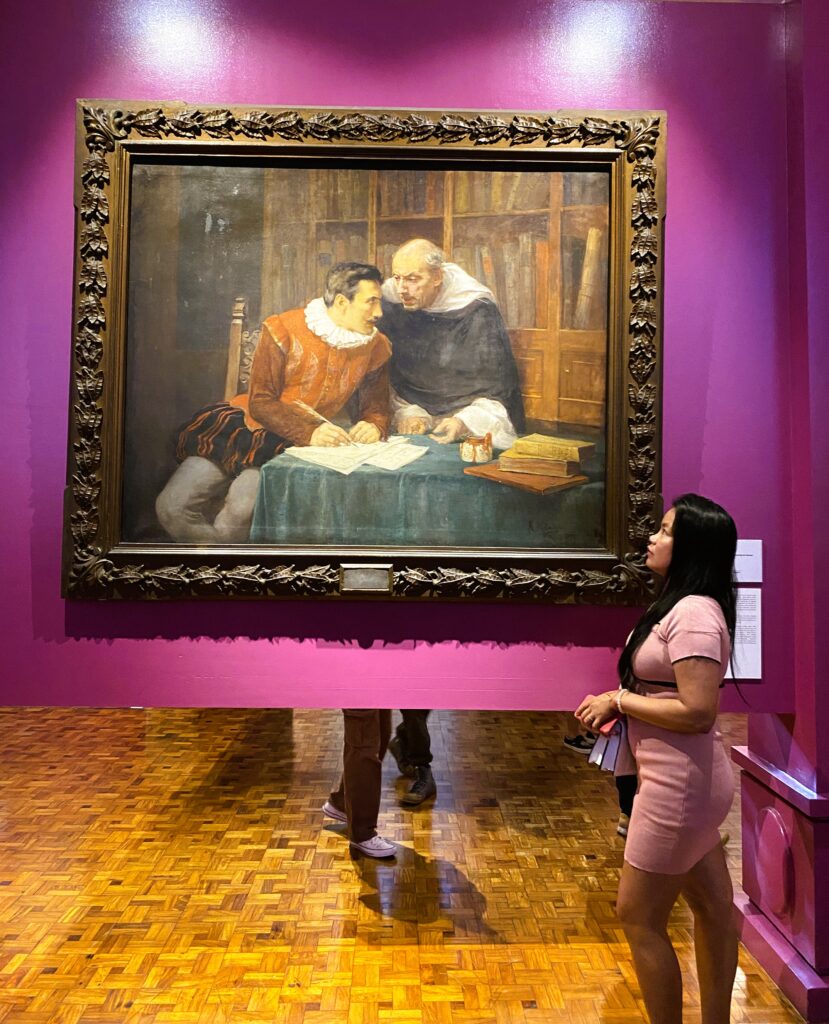
Created by the Filipino artist Félix Resurrección Hidalgo. This oil painting depicts an imagined historical encounter between Don Gómez Pérez Dasmariñas, the seventh Governor and Captain-General of the Philippines from 1590 to 1593, and Fray Domingo de Salazar, a Dominican Friar and the first Bishop of Manila from 1581 to 1591.
Juan Luna’s Portrait of a Lady

Juan Luna’s Portrait of a Lady, also known as Mi Novia or Portrait Paz Pardo de Tavera, is a painting depicting a woman in bed, holding a rosary and a prayer book next to her.
Interestingly, some people believe that the painting is a portrait of Paz, Luna’s wife. However, there is also a superstition that it brings misfortune to those who have owned it.
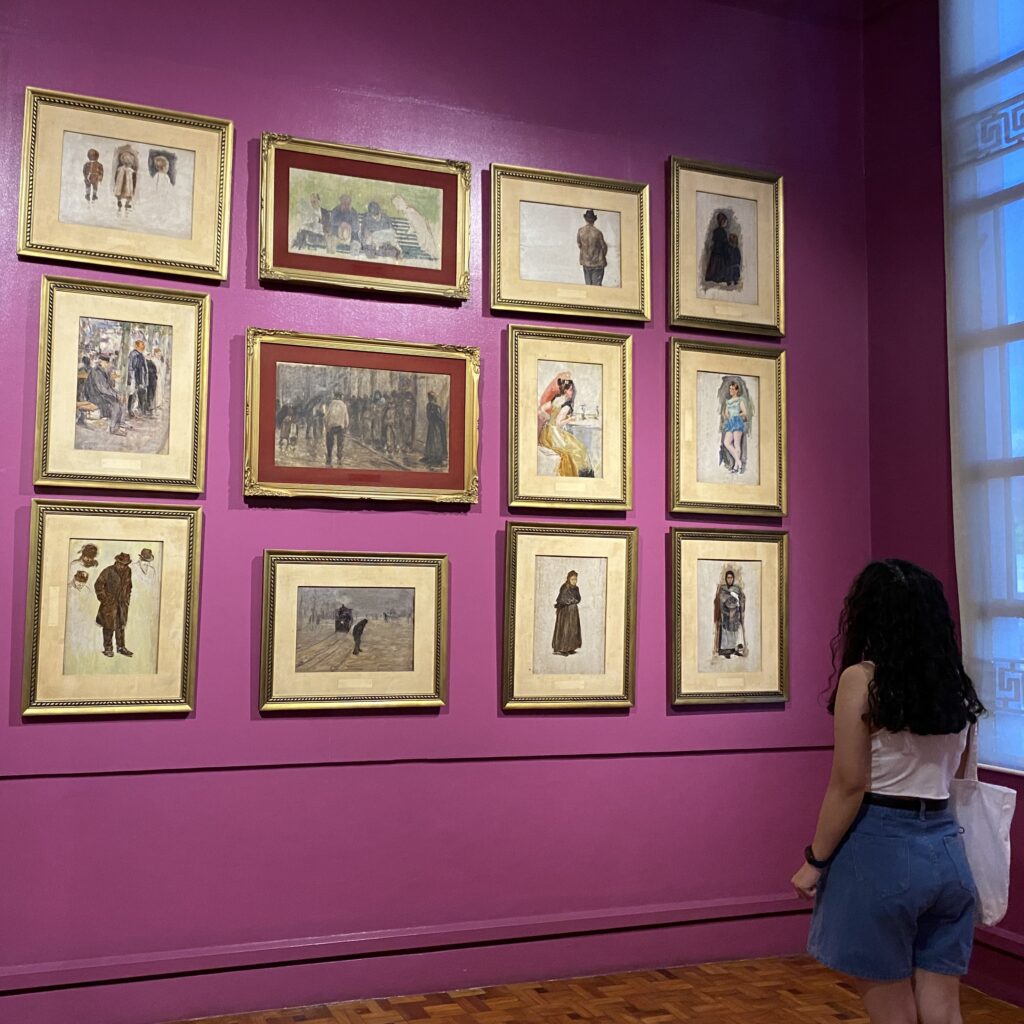
Before wrapping up our day, we took extra time to admire the incredible works of Juan Luna. His brushwork and attention to detail were truly captivating—every stroke seemed to breathe life into the canvas.
One funny moment? Jezelle actually liked a photo I took of one of the paintings! That really surprised me since her photos are usually way better than mine. But hey, maybe I got lucky—or maybe she didn’t have much choice at the time! (Lol!)
As the museum neared closing time, we had to skip a few sections. Still, we made the most of our visit and ended the day around 5:00 PM, feeling happy and fulfilled.
Looking Ahead: More Intramuros Adventures to Come
We’re already planning a return trip to Intramuros. Next time, we’ll take it slower to explore all the artworks we missed—and we’ve added new places to our must-see list:
- Casa Manila
- Baluarte De San Diego
- Fort Santiago
- And of course, the famous Intramuros churches like San Agustin and Manila Cathedral.
After walking through history, our feet definitely felt the effort—we clocked in a whopping 15,000 steps, way more than my usual 6,000! But every step was worth it.
Art, Memories, and Meaningful Reflections
Visiting these museums in Intramuros gave us a glimpse into how people lived in the past—and reminded us why preserving our history matters. It made me reflect on how precious our present is and how each of us plays a part in shaping the future.
For years, I wanted to visit educational and cultural spots like this. But work and responsibilities always got in the way. Now, I’m thankful to have a more flexible schedule that allows me to pursue these long-held dreams.
Even better, I have an amazing friend who shares my love for museums. Exploring these places with her made the experience more meaningful and way more fun—especially since she’s also a way better photographer! (Lol!)
Though we didn’t get to see it all, we learned a lot and made unforgettable memories. And this is just the beginning.
To Future Travelers: Plan Your Own Intramuros Museum Trip
If you’re thinking of visiting Intramuros museums, I hope this post gave you a useful peek into what to expect—and a deeper appreciation for the history, culture, and creativity waiting to be discovered.
Thanks for reading and sharing in our journey. Wishing you happy travels and meaningful adventures ahead! 🫰
